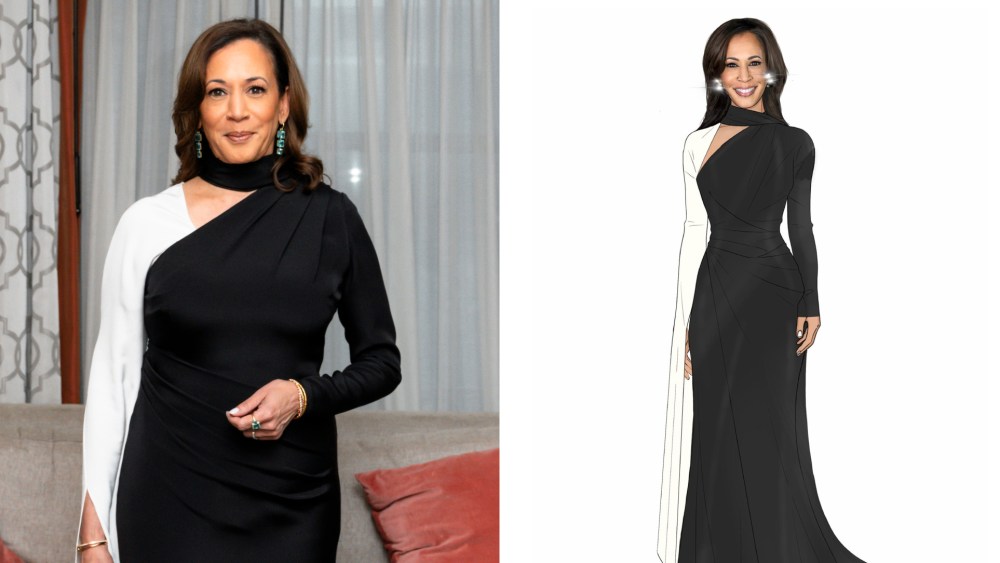PARIS — Christened “cathedrals of consumption” by French author Émile Zola, the original department stores gave rise to the invention of shopping as entertainment from their inception in Paris in the mid-1800s.
Now the French capital’s Cité de l’Architecture et du Patrimoine museum is exploring the cultural and commercial influence of department stores through the lens of architecture in a new exhibit called “The Saga of the Department Stores.”
Four years in the making, it is the partner exhibit to last year’s “The Birth of Department Stores” at the Musée des Arts Décoratifs, and dives into how department stores were at the forefront of social change and how they are continuing to adapt to stay relevant.
“The birth of department stores is also the birth of shopping. People come to buy, but they come to have fun, they come for a walk, and it’s a commercial revolution,” said curator Isabelle Marquette.
You May Also Like

That revolution extended to interior and urban design.
The architecture of these showstopping buildings featured large atriums, grand staircases, arched columns and gilded accents, and greatly influenced the shift from small, independent and specialized boutiques to the new way of shopping.
“The department store, from about 1880, began to become extremely decorated with monumental architecture and a very, very shimmering decor,” said curator Elvira Férault. “To attract customers, you had to mark the city, dominate it and be symbols of modernity.”
They also influenced city planning, with increasing importance as economic drivers of downtowns.
Paris was the birthplace of the department store, with credit given to Aristide Boucicaut’s Le Bon Marché as the first one, though Printemps and the now-shuttered Les Grands Magasins du Louvre and Les Grands Magasins Dufayel were equally upscale contemporaries.
As this architectural style was taught through L’École Nationale Supérieure des Beaux-Arts, it quickly spread throughout the world, evidenced in the department stores that sprung up in other cities — El Palacio de Hierro in Mexico City and Magasin du Nord in Copenhagen, among others.
The domed design of Printemps was reproduced in stores as far afield as Bulgaria and Egypt, with original art posters of the stores on show. As the department store architecture grew in influence, the stores themselves expanded their geographies, with La Samaritaine opening outposts in Buenos Aires and London, for example.
The exhibit tells this story through archival architectural and site plan drawings, and key pieces from stores such as parts of original staircases, on display.

The curators worked with the International Association of Department Stores (IADS) to uncover historical documents, and several items in the exhibit come from the private archives of the department stores and have never been on display before, including tile mosaics, pieces of stained glass and other design elements.
Rich displays of historical posters and catalogues, whose covers were sketched by artists, showcase the development of advertising as an art form and were unearthed from private collections.
Other items are on loan from the Musée d’Orsay and the Palais Galliera fashion museum, including a display of fashion dolls.
So culturally influential were the department stores that Zola encapsulated them in his 1883 novel “Au Bonheur des Dames” (“The Ladies’ Paradise”) in which he described the luxurious goods and services available. One of the most key pieces of the exhibit is an original handwritten version of Zola’s story, with the notebook on display to the public for the first time.
The newfound freedom of the female shopper was influential in art, too, such as Jean Béraud’s painting “Parisienne sur la place de la Concorde,” on display from the Musée Carnavalet, among other works presented.
The department stores gave birth to many concepts of marketing. They created loyalty programs, specialty items such as postcards and branded fans and their own, in-house lines of clothing to differentiate themselves from their competitors.
They also developed the concept of event shopping. For example, beginning of the year “White Sales” on linens became annual dates on the calendar. All this is told here, through documents and archival ads.
Once past the stunning displays from the stores’ golden age, the exhibit moves into two additional sections. The economic growth of the post-World War II period led to an increased focus on innovation and efficiency. The grand, theatrical halls were no longer seen as desirable and stores and architecture shifted.
In the same way that the architect Le Corbusier created his modernist style of “machines for living,” department stores followed suit in the style of building “machines for selling.”
“The cathedrals disappeared behind efficiency,” Marquette said. Architecturally, this gave rise to the closed box-style facade.

“After the Second World War, this is a period of enormous economic growth and the big department stores will try to stay in the race as much as possible. They will try to make their way of operating profitable and we find this optimization in the architecture but also in the organization of the department store,” Marquette said.
Stores were optimized using data, including studies on floor traffic. They created a service culture, even going so far as to advertise their female employees in newspapers as “service with a smile,” and centralizing their buying and merchandizing departments.
“Everything is efficiency, but you are losing at this time uniqueness, because everyone is selling the same type of products,” Férault said.
As stores lost some of their individuality, they upped the ante in advertising and marketing with fun TV ads unspooling here, and formed partnerships with artists, including enlisting Salvador Dalí on window design to try to stand out from the crowd.
The exhibit also explores how department stores gave rise to ready-to-wear and the concept of brand identity, and how teens became an increasingly important demographic.

As the exhibit moves into the modern era, it looks at what strategies department stores are applying to remain relevant as they face economic and social upheavals. They are once again morphing into entertainment palaces that can function as a “day out” and place for a walk, while many are looking to new styles of architecture to cope with environmental and climate change challenges.
Another key aspect is how departments stores are looking to reinvent themselves once again through architecture, such as Rem Koolhaas’ Office for Metropolitan Architecture agency redesigning Berlin’s KaDeWe, and the Future Systems agency’s Selfridges building in Birmingham. Department stores are working to reassert themselves as economic players in city centers.
New models being tried in China, such as the SKP outposts in Chendgu and Xi’an, show the direction of department stores’ current architectural reinvention.
The museum’s program is complete with special screenings of films, including 1984’s “The Store” and the Marx Brothers’ 1941 classic “The Big Store,” shown in the museum’s theater.
The exhibit runs until April 6.


